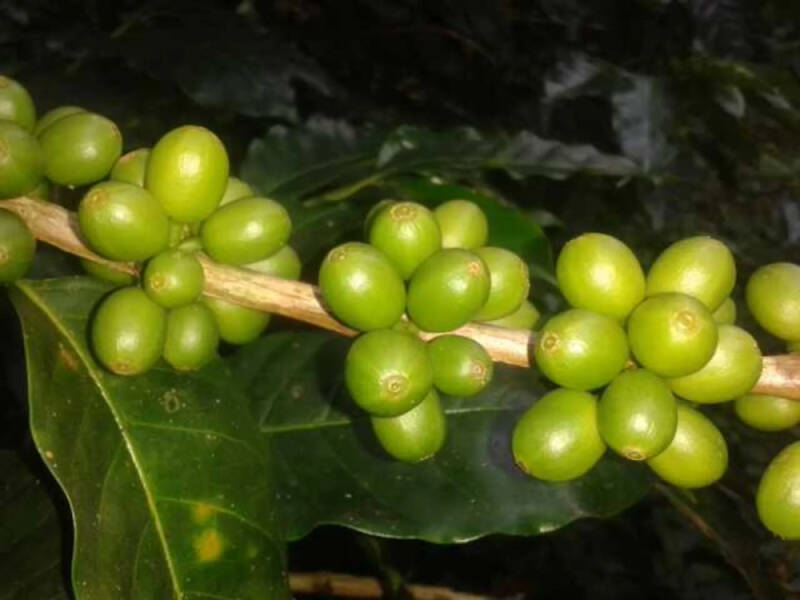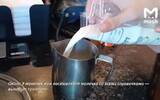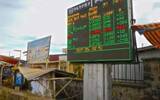What coffee varieties are mainly grown in Costa Rica? Introduction to Obata, H1 and Villa Sanchi varieties
Costa Rican coffee has always been famous for its quality coffee. although the total output of coffee is small, the country attaches great importance to the cultivation of high-quality coffee beans like Arabica. It is believed that only by producing high-quality coffee can we gain a firm foothold in the international market.
So in 1989, the Costa Rican government passed a law banning the cultivation of low-quality coffee beans, making it the only country in the world to produce any kind of coffee other than Arabica.
At first, the coffee varieties grown in Costa Rica were mainly Kaddura Caturra and Kaduai Catuai. The Costa Rican Tarazhu coffee beans selected from Qianjie Coffee are selected from Kaddura and Kaduai, which are washed and brewed with slight acidity, sweet orange, nut and honey flavor.

Although Kaddura and Kaduai varieties in Costa Rica have high quality and yield, they are very vulnerable to coffee leaf rust. Coffee production in Costa Rica has been cut by at least half because of coffee leaf rust. As a result, Costa Rica has begun to grow more different varieties of coffee in recent years through introduction and research and development. what other varieties of coffee are now grown in Costa Rica besides Kaddura and Kaduai?
Villa Sarchi Verasac
Villa Sarchi was first discovered in Sarchi in the northwestern province of Alajuela, Costa Rica, in the 1950s. Through genetic identification, it was found that this variety was a natural variety of bourbon, which was similar to Kaddura and had single gene mutation, which led to short plant and small interval between fruits, so the yield was higher, but the variety was also poor in disease resistance. vulnerable to leaf rust, nematode and berry disease.

However, this variety can well adapt to high altitude planting conditions, has good quality at high altitude, and the fruit can withstand strong winds and is not easy to fall, so it is very suitable for growing in Costa rica. all because 80% of the coffee growing areas in the country are located at an altitude of 8-1600 meters above sea level, with bright citrus acidity and complex fruit flavor. At present, this variety has been introduced into Honduras, but it is not widely cultivated in Costa Rica. In addition, this variety was crossed with Tim variety Timor to develop an important leaf rust control variety T5296 (Sachimo).
CENTROAMERICANO-H1
This variety is referred to as H1, which is the first generation (F1) hybrid variety, which is bred by the hybrid of T5296 (Sachimo) and Rume Sudan (an ancient wild variety found in the Rumei Valley of Boma Plateau, Sudan). Due to the genes of the rust-resistant variety T5296, H1 has strong resistance to leaf rust, but is vulnerable to nematodes and other pests.
In addition, the yield of the H1 variety is very high, and in the breeding evaluation, the H1 coffee yield is 22-47% higher than that of other Central American varieties, and it is planted at high elevations and has good quality under proper management. At present, F1 hybrids are relatively new in coffee agriculture. in the past 15 years of cultivation, only a few coffee varieties (H1 variety is one of them) can be commercialized for farmers, and can only be planted in some countries and regions.
Obata Obata
This variety originated from Brazil and was selected by the Brazilian Institute of Agronomy (IAC). It was released in 2000 and is a hybrid of the Timorese species Timor and Verasaci Villa Sarchi. Thanks to the Timor lineage of Wen species, it has strong resistance to coffee leaf rust and is suitable for planting in low and middle altitude areas. In addition, like Villa Sarchi, it has the characteristics of short plants and high yield. The variety was introduced to Costa Rica in 2014 by the Costa Rican Coffee Institute (ICAFE) and released for planting.
At present, in addition to the above varieties, Costa Rica has also introduced varieties such as Rosa Geisha from Panama, SL28 from Kenya and ET47 native to Ethiopia.
For more information about coffee producing areas, please scan the code directly and follow: coffee comments.
Long press the QR code to follow:
TRANSLATE with
XEnglishArabicHebrewPolishBulgarianHindiPortugueseCatalanHmong DawRomanianChinese SimplifiedHungarianRussianChinese TraditionalIndonesianSlovakCzechItalianSlovenianDanishJapaneseSpanishDutchKlingonSwedishEnglishKoreanThaiEstonianLatvianTurkishFinnishLithuanianUkrainianFrenchMalayUrduGermanMalteseVietnameseGreekNorwegianWelshHaitian CreolePersian
TRANSLATE with
COPY THE URL BELOW
BackEMBED THE SNIPPET BELOW IN YOUR SITE Bing Webmaster PortalBack
Important Notice :
前街咖啡 FrontStreet Coffee has moved to new addredd:
FrontStreet Coffee Address: 315,Donghua East Road,GuangZhou
Tel:020 38364473
- Prev

See you for a long time! Cafes launch an option to pay for "breast milk"?!
▲ Click to pay attention| Daily Boutique Coffee Culture Magazine Coffee Workshop Nowadays, in order to attract more customer groups, many coffee shops follow the trend and launch various dairy or non-dairy options, such as purified milk, almond milk, oat milk, coconut milk, etc. For consumers to choose from. But recently, a family from the southern hemisphere
- Next

Ethiopia introduces new regulations and coffee bean prices may rise!
According to reports, the Ethiopian Commodity Exchange (ECX) is recently introducing a new export pricing mechanism for green coffee beans. Every week, the price of green coffee beans will be calculated based on the Arabica coffee futures price on the ICE Intercontinental Exchange in New York and the current exchange rate of the Commercial Bank of Ethiopia., thereby helping farmers
Related
- Orange chocolate latte making ratio parameters and formula sharing! Winter special latte milk espresso recommended!
- How does the degree of roasting of coffee beans determine? What is the difference between espresso beans and hand-brewed coffee beans? Is it better to roast Huakui coffee in the medium or lightly roast it?
- How does water injection style affect coffee flavor? How does the size and height trajectory of the water flow used to brew coffee affect extraction?
- Coffee festival booth recruitment translation reward is coffee beans?! Netizen: Golden beans?
- Be careful every word! Starbucks announcement reminds Mixue Ice City fans to clean up garbage!
- Can cheese be made into espresso? How to make a creative special salty cheese latte?
- It has been opened for less than 2 years! Huzhou's first Tims will be closed permanently!
- Chain tea shops collect gifts and are "customized with the same model"! Merchant: I really didn't expect it
- Mocha pot coffee machine coffee grease extraction skills! Is coffee grease or Crema bubbles?
- What is the difference between siphon pot coffee and hand-brewed coffee? What coffee bean parameters and water temperature ratio are appropriate for the siphon pot to make coffee?

